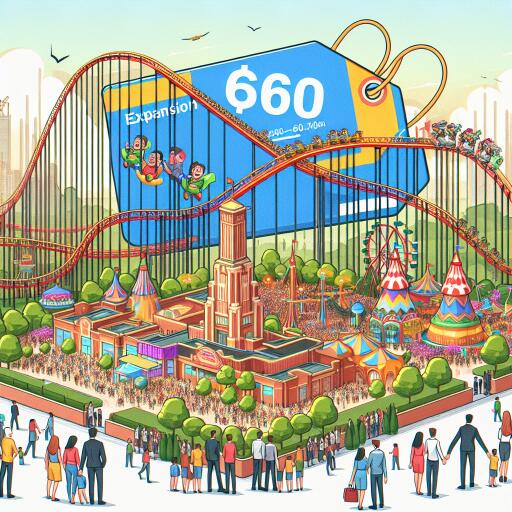Why Disney is Doubling Down on Theme Parks with a $60 Billion Plan
The magic of Disney is set to become even more enchanting with an ambitious $60 billion investment plan over the next 10 years. This significant infusion of capital into Disney’s experiences division underscores the company’s commitment to its theme parks, resorts, cruise line, and merchandise.
In Anaheim, the heart of Disney’s operations, the City Council has green-lighted an expansion at Disneyland Resort. This plan could see at least $1.9 billion funneled into new attractions, alongside developments in hotel, retail, and restaurant spaces. So, why is Disney pouring such vast sums into these ventures?
At a time when other segments of Disney’s empire, such as film and television, face challenges from cord-cutting and a competitive streaming landscape, theme parks shine as a beacon of stability and profitability. They not only represent a significant income but also play a strategic role in the company’s ecosystem, intertwining beloved movies with attractions in a cycle that promotes and sustains viewer interest and engagement.
Carissa Baker, an assistant professor specializing in theme park and attraction management at the University of Central Florida’s Rosen College of Hospitality Management, notes, “Disney’s theme parks have consistently proven themselves as leaders in the sector, despite the company facing stiff competition in film and TV spaces.”
The reliance on theme parks has dramatically shifted Disney’s revenue model. During the most recent fiscal year, approximately 70% of Disney’s operating income stemmed from its experiences division. This is a stark contrast to a decade ago when TV networks were the primary income source. The pandemic highlighted this shift even more, as theme parks managed a rapid recovery compared to the film industry, buoyed by pent-up demand from visitors.
Experts agree that theme parks often rebound swiftly following economic downturns. Dennis Speigel, founder and CEO of International Theme Park Services, attributes this resilience to the unique, irreplaceable experiences they offer. “Disney immerses you in their storytelling like no other, setting the global standard for our industry,” says Speigel.
The DisneylandForward initiative is a testament to Disney’s dedication to innovation within its parks. By seeking more freedom in zoning, Disney aims to blend attractions with retail, dining, and more, thereby enhancing the visitor experience. Though specific new attractions have yet to be detailed, the prospect of immersive experiences themed around popular franchises like Frozen, Tron, and Avatar is exciting for fans.
Disney’s strategy involves continually refreshing its park offerings to keep visitors returning. Notable recent additions across its parks include Star Wars: Galaxy’s Edge and Avengers Campus. Planned attractions like Magic Kingdom’s Tiana’s Bayou Adventure, which replaces the outdated Splash Mountain, promise to renew interest and ensure the parks’ growth.
The competitive landscape in theme parks is also heating up, with rivals like Universal Studios and SeaWorld introducing new attractions. This competitive pressure means Disney cannot afford to rest on its laurels but must instead keep innovating to maintain its leading position in the industry.
As Disney embarks on this monumental investment, the goal is clear: to not only preserve the magic and allure of its theme parks but to expand and elevate the experience for guests from around the world. In doing so, Disney continues to weave its stories into the fabric of global cultural experiences, ensuring that the magic of Disney remains a cherished part of many lives for generations to come.
